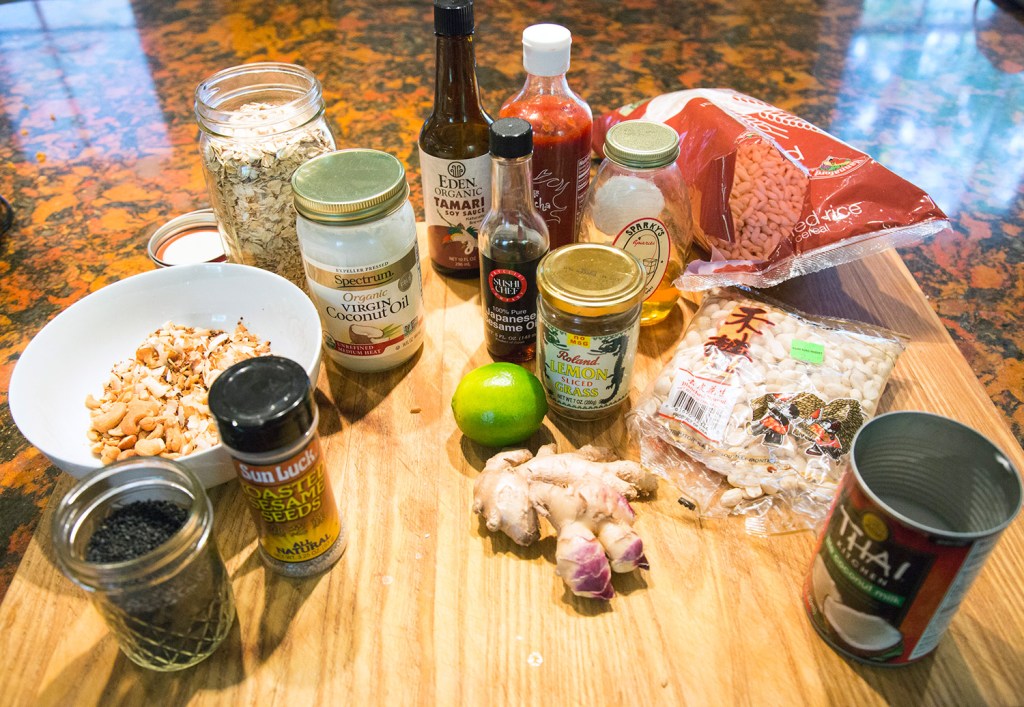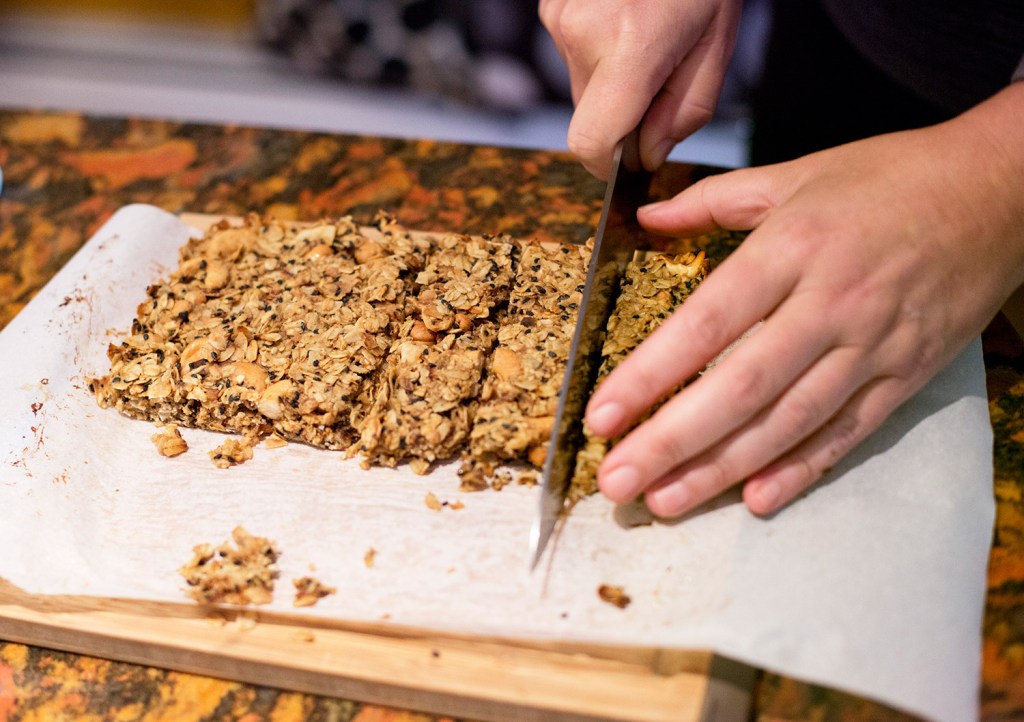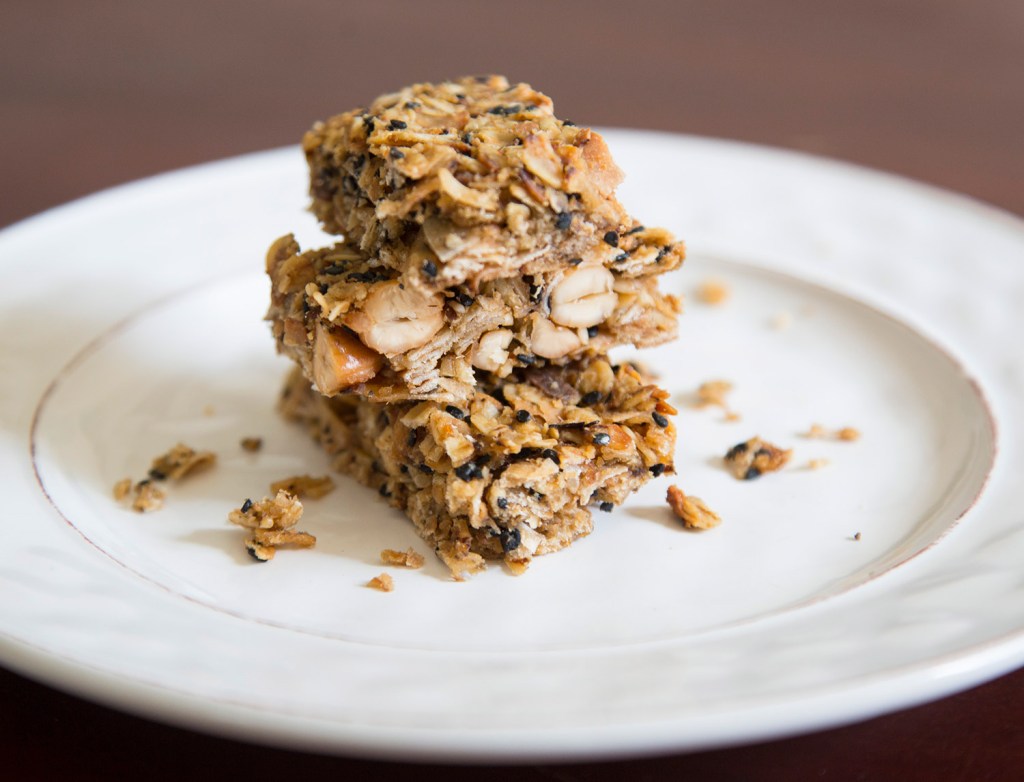One of the regular features in Delicious, a favorite food magazine of mine published in London, is a column called Loose Ends. On this single page, the editors give three or four uses for any out of the ordinary ingredients a recipe in that issue requires home cooks to have on hand.
It’s been an especially useful tool for me as I have grown to love homemade Asian food for its vibrant tastes and learned that those layered flavors are facilitated by a whole bunch of ingredients, some of which keep well, while others need to be used up or go to waste.
Back before Sriracha reached celebrity status, Loose Ends taught me to beat the chili sauce into my scrambled eggs and combine it with tomato paste for spicy pork ribs.
When a friend who’d done two tours of duty in Japan as a Navy spouse convinced me that yuzu juice should always be part of dipping sauce served with gyoza, Loose Ends showed me I could also shake it in a tall glass with tequila, triple sec and ice for interesting margaritas. And when I started dabbling in coconut milk curries, Loose Ends suggested I add the other half of the can of coconut milk to bowls of porridge, pans of rice pudding and a small pot to poach salmon.
When I bought a hunk of palm sugar to make a Thai spring roll dipping sauce, Loose Ends explained I could melt leftover bits into cream with instant espresso granules as an excellent ice cream base.
If I am looking to integrate multiple leftover Asian ingredients into one dish, though, I combine them in a flavored broth to serve with noodles, vegetables and a bit of cooked protein. Sometimes I follow a recipe, but most often I wing it with a ratio of 2 cups stock to 1 tablespoon of each of the earthy (tamari sauce, soy sauce, preserved umeboshi plums, fish sauce, oyster sauce); sweet (palm sugar, mirin, hoisin sauce, cinnamon, star anise, Chinese five spice powder); sour (Chinese black vinegar, brown rice vinegar, yuzu juice, lime juice); aromatic (lemongrass, kaffir lime leaves, ginger); or, depending on the intended eaters, spicy (chili paste, chili sauce, dried chilies) elements.
The ingredients don’t need much more time in the pot getting to know each other so the broth is pretty well rounded by the time the noodles are cooked.
My second go-to use of straggling Asian ingredients is a dressing that suits crispy slaws better than lettuce salads. A standard salad dressing combines 1 part souring agent to 2 or 3 parts oil. However, since Asian vinegars are both sweeter and deeper than western ones and Asian sesame oils highly flavored, I run with a one to one ratio, then round out the flavors with broth and season with soy sauce and chili flakes, replacing salt and pepper, respectively.
When I’m feeling adventurous, I experiment. My success rate on that front has been less than 50 percent. I now know that raw ginger will curdle a cow’s milk sauce; triple-concentrated brown rice vinegar is a bad idea for quick pickles; and Thai bird chilies are way too hot to use as a subtle flavoring for chocolate pudding.
But I hit a home run with Nutty Thai Granola Bars – for flavor and for using 10 Asian ingredients sitting in the larder that might otherwise have been wasted.
Christine Burns Rudalevige is a food writer, a recipe developer and tester, and a cooking teacher in Brunswick. Contact her at: cburn1227@gmail.com.
Send questions/comments to the editors.







Comments are no longer available on this story